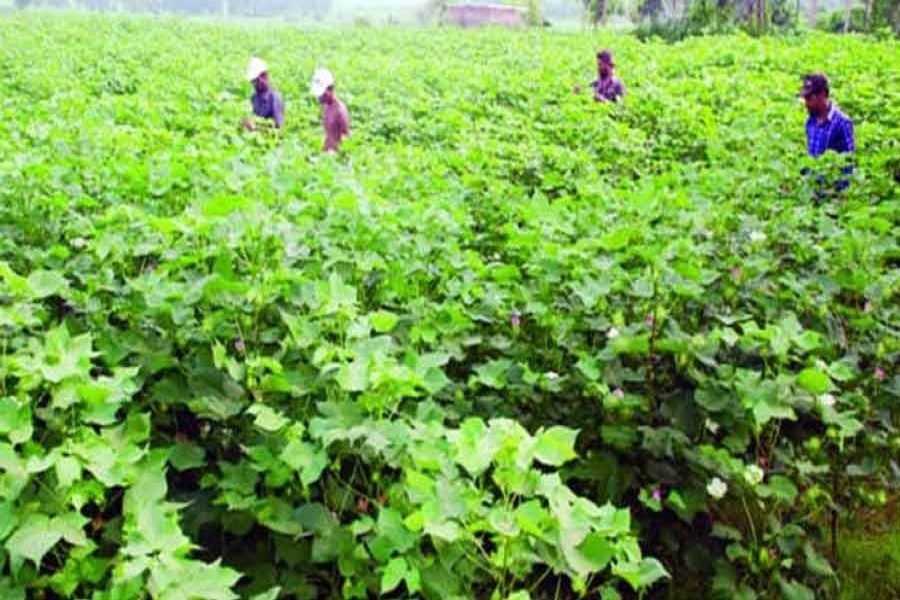Youth engagement in agriculture in Bangladesh

Dhaka, 25 November, 2020: Agriculture has been the most significant sector in Bangladesh economy. This sector generated 38.58 per cent employment in 2019 as against the global average rate of employment of 26.86 per cent employment in agriculture (as a percentage of total employment).
Agricultural production has increased in the last few years. However, due to environmental disasters, climate change, this growth is fraught with serious difficulties. Apart from environmental threats, rapid urbanisation is playing a big role in decreasing labour supply to agricultural production. The UN DESA estimates that 68 per cent of the world population will live in urban areas by 2050. That means by 2050, 7 out of every 10 people will live in a city. The decrease in population in rural regions will surely fall on the participation of young people in agricultural activities.
Agricultural production, fighting against climate change and youth employment are the lead issues in the 2030 Agenda for Sustainable Development Goals. In recent years we are observing that the interest of young people in agriculture is declining at an alarming rate. In last five years we witnessed a huge shift in the employment in service sector from agriculture sector.
In 2015 employment in agriculture sector was much higher than service sector. Five years later a huge agriculture sector employment has moved to service sector. We can be benefited from this transformation in the short term, but we may suffer for this movement in future.


According to demographic dividend almost one third of total population of Bangladesh is youth. But it is matter of regret that we are still not able to utilise this population in any productive way. As a result, unemployment among youth is increasing.
In the last ten years total employment in agriculture sector is decreasing, while unemployment rate of youth is increasing. Both the changes indicate that we can mitigate these problems simultaneously. If we are able to move this youth to the agriculture sector, we can reduce the unemployment rate and also ensure high level of production.
There are six public and one private university in Bangladesh which are specialised for agricultural science. But after completing graduation most of these graduate go for career prospect in service sector instead of agricultural sector.
At this point curriculum must be made more practical so that more students can think about career in agriculture. On the other hand, issues like agriculture, the impact of climate change should be added as a subject in the school curriculum also to build awareness about the scarcity of natural resources and negative impact of climate change on our food production.
About 46 per cent of the total unemployed youth are university graduates. The Centre for Policy Dialogue, CPD noted that in educated labour force unemployment rate is increasing. These youth gradates can launch more technological solution to agriculture. ICT graduates can introduce different weather forecasting techniques using big data concept, region based market demand by Global Positioning System GPS and so on. In recent times we have some agriculture based apps like Krishaker Digital Thikana, Krishaker Janala, Agriculture Information Service, BARI app, Mrittika etc.
We all know that cultivable land in the country is limited and it is more difficult for young people to manage land for cultivation. The government should start innovative financing in agriculture, especially for youths. Public spending in agriculture is increasing at a slow pace. Allocation for Agriculture and Allied Sectors in FY 2020-2021 budget has been raised by 5.7 per cent compared to that in revised budget in FY 2019-2020. Despite this, the share of Agriculture and Allied Sectors in total budget has been experienced a declining trend over the recent years.
Organic framing could be another big prospect for engaging our youths in agriculture sector. According to IFOAM total land area under organic cultivation in Bangladesh is 0.177 million hectares representing only 2 per cent of the country's total cultivable land. Though there is less demand of organic food in local market due to higher price and lesser availability, concerted efforts in growing organic food may not only spur domestic demand but also fetch opportunities for export given the high global demand.
To make more gains in agriculture we need to decrease the production cost and at the same time increase productivity. For developing agribusiness we need to focus more on non-core farming activities. This includes proper supply chain management, controlling middlemen, crop selection, and packaging of products and so on.
As the world population is projected to be 10 billion by 2050, we need to be conscious about our food production and food security. Youth engagement in agriculture will definitely improve our food production besides creating job opportunities.
Read More
.

